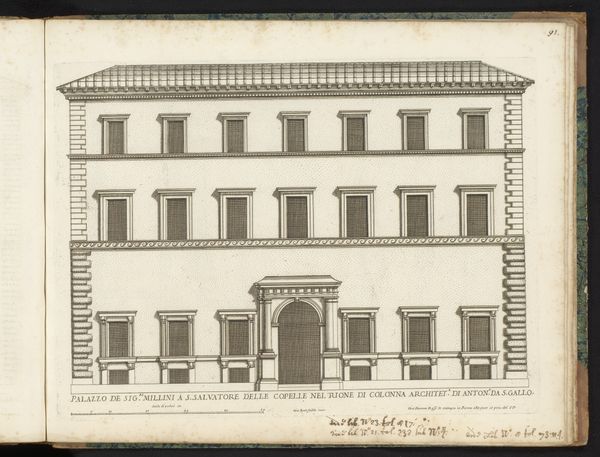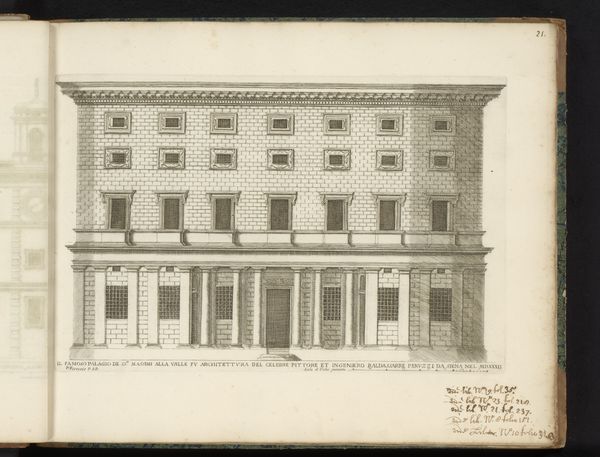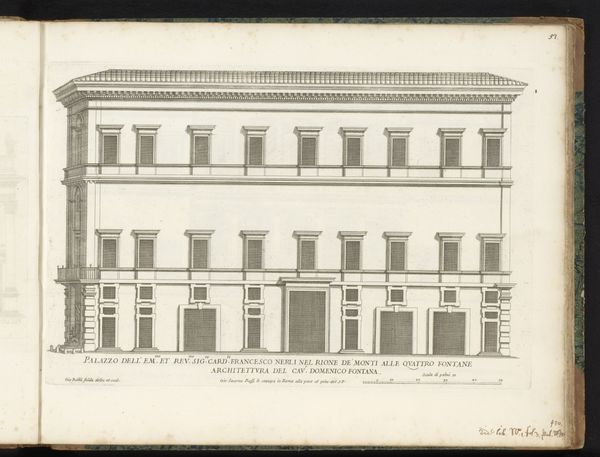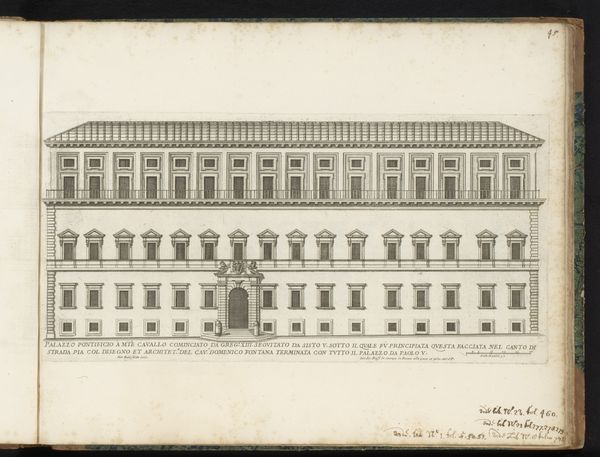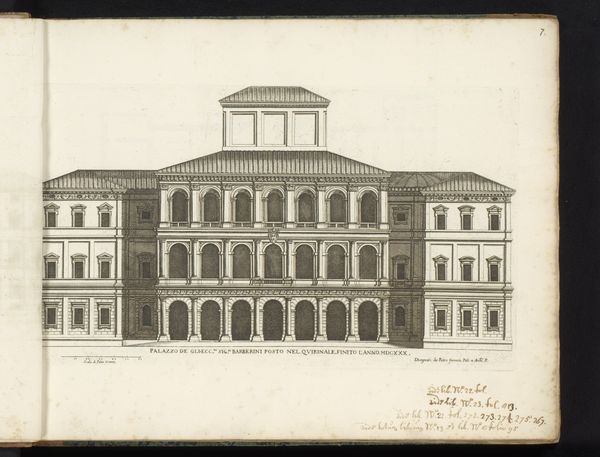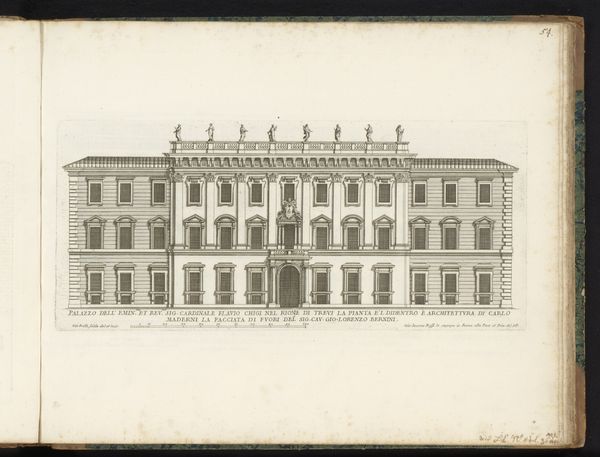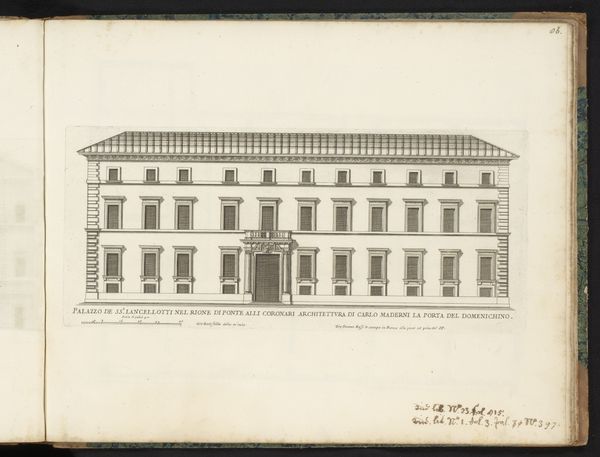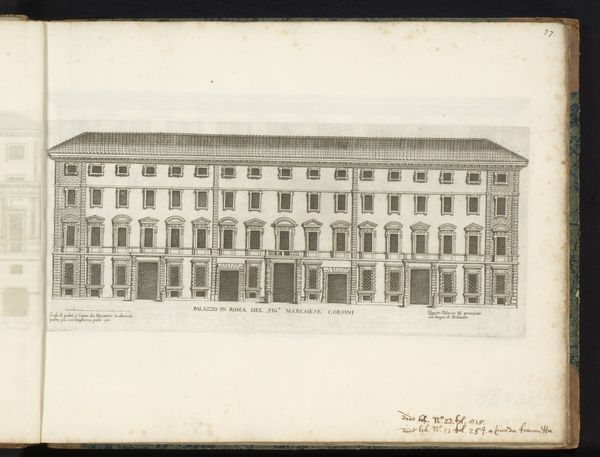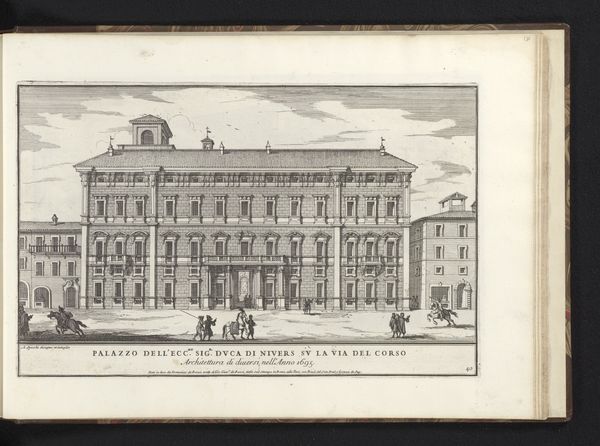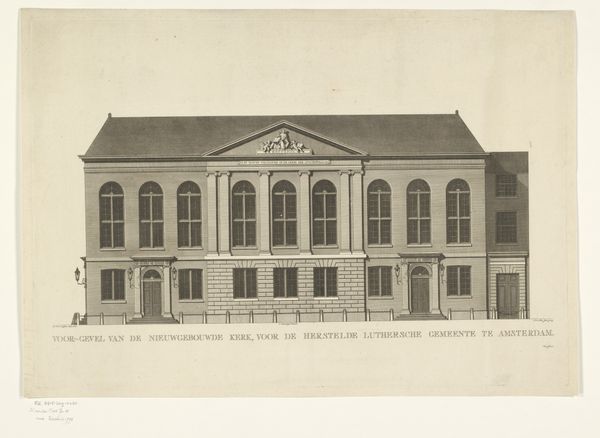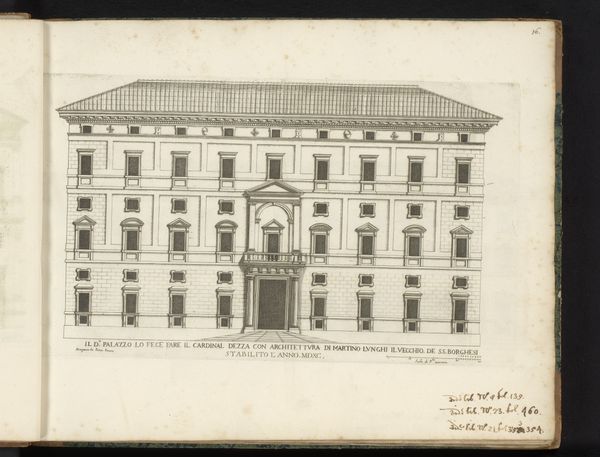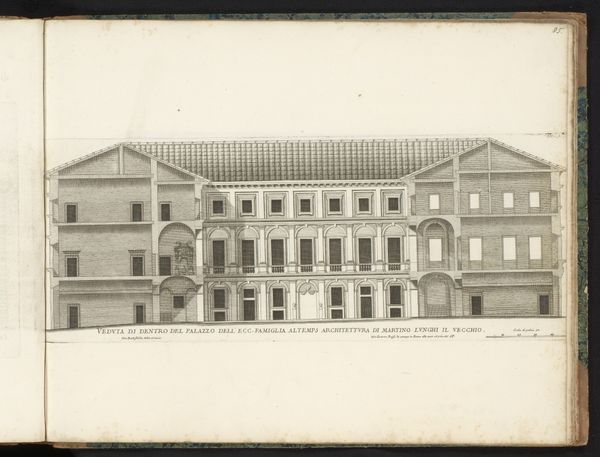
drawing, print, etching, paper, ink, engraving, architecture
#
drawing
#
neoclacissism
# print
#
etching
#
etching
#
paper
#
ink
#
engraving
#
architecture
Dimensions: 267 mm (height) x 460 mm (width) (bladmaal)
Curator: This is "Opstalt af et opfostringshus," which translates to "Elevation of a Foundling Hospital," an etching by Johannes Gottfred Bradt, dating back to 1764. It is a detailed architectural rendering. Editor: Immediately, I’m struck by the stark formality. The precise lines and symmetry create a somewhat cold, almost sterile impression. It feels like an institution depicted, not a home. Curator: Yes, the very subject—a foundling hospital—carries significant social weight. These institutions were intended to offer sanctuary, yet they also speak to the era's societal anxieties about abandonment and illegitimacy. Bradt doesn't sentimentalize it; he presents an objective face. The inscription includes both Danish, French, and German titles, suggesting that this institution was intended to address broad, even universal, needs. Editor: And the architecture reinforces that. Look at the imposing facade with the rigidly aligned columns, and the rows upon rows of identical windows, It suggests order, control, a very specific function, or perhaps even surveillance. The almost relentless repetition is a core element of its aesthetic impact. The use of light and shadow, limited as it is in an etching, accentuates this rigidity. Curator: Indeed, Neoclassicism, the art movement that prevailed, found inspiration from Classical antiquity, valuing these same virtues. Note the central pediment, the symmetry I just pointed out—all harkening back to the ideals of Roman civic virtue and rational order. The image of what looks like an eagle is present too at the very top, maybe suggesting state power and control in some form. Editor: Yet, within this framework, Bradt employs surprisingly subtle gradations in the etching, giving the building a slight sense of depth despite the planar composition. Look at the nuanced differences in line weight to suggest recession. This highlights the underlying geometric order, as it should for architectural work of this period. Curator: And don’t forget, orphanages have held symbolic weight for centuries, often tied to narratives of loss, resilience, and institutional power. The building serves almost as a stage for these deeper, often unspoken cultural anxieties surrounding the care, or lack thereof, for the most vulnerable members of society. Editor: It's a compelling work precisely because it's so outwardly restrained. The formal control amplifies the subtext, highlighting what isn't explicitly shown but powerfully implied through the building's sheer, imposing presence. I came to look for emotion in Neoclassical art and found it masked and almost clinical, like the scene of a crime.
Comments
No comments
Be the first to comment and join the conversation on the ultimate creative platform.
